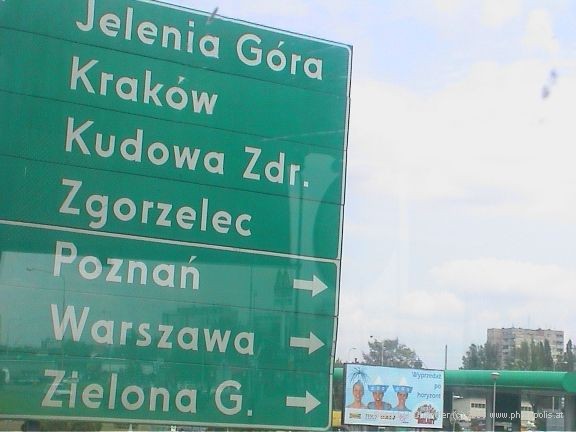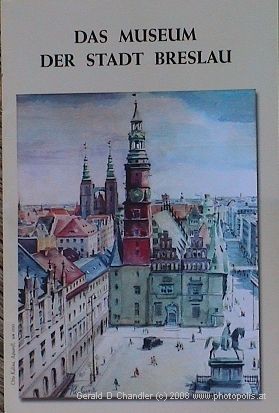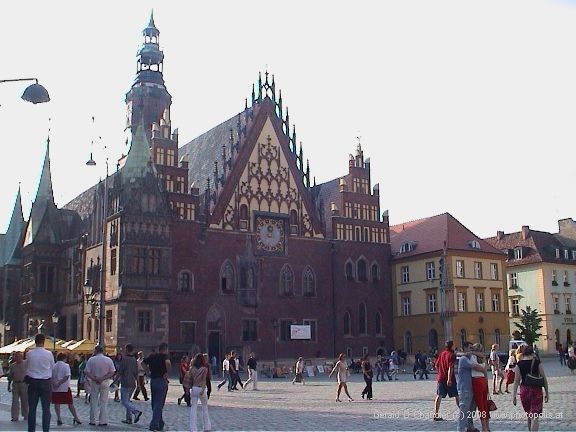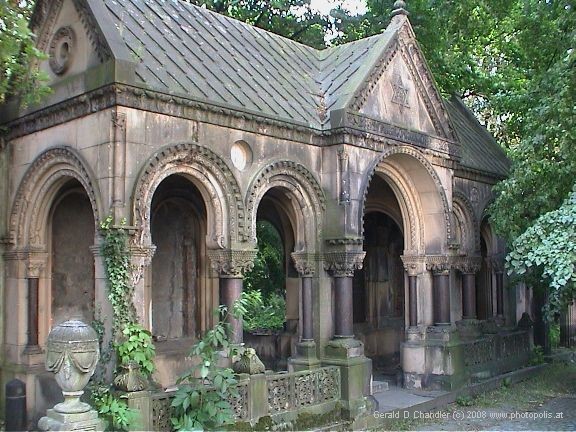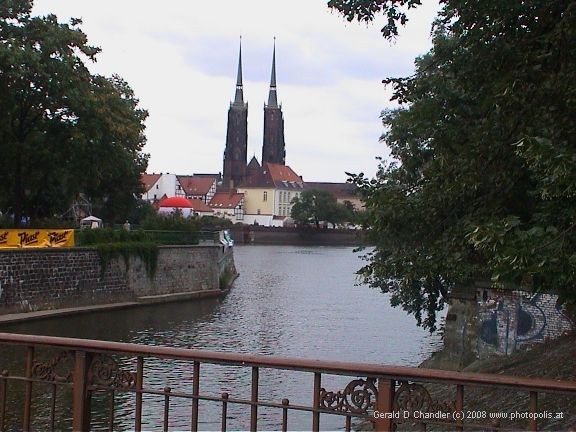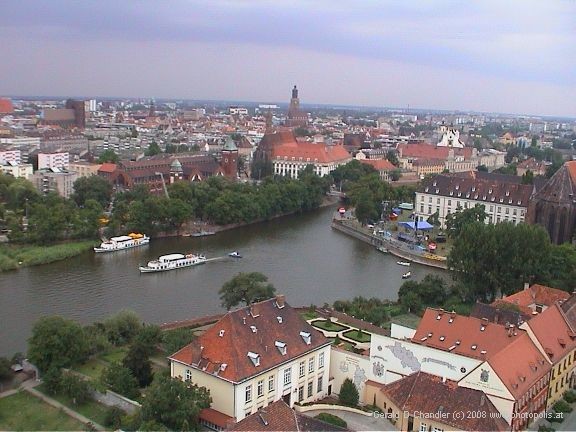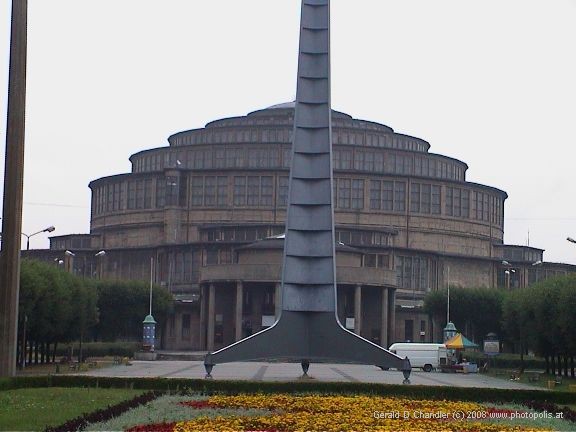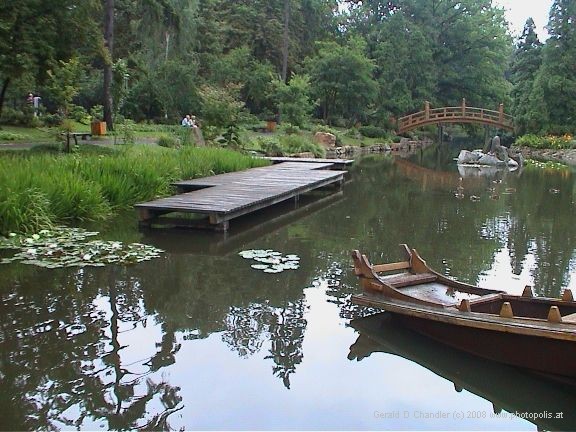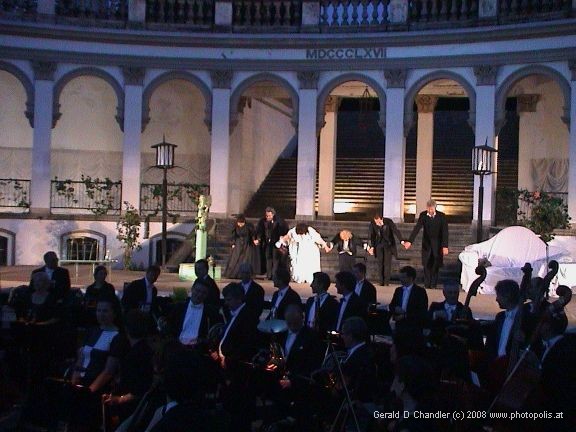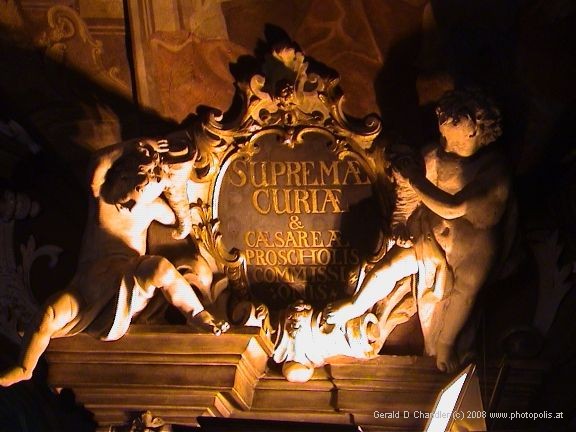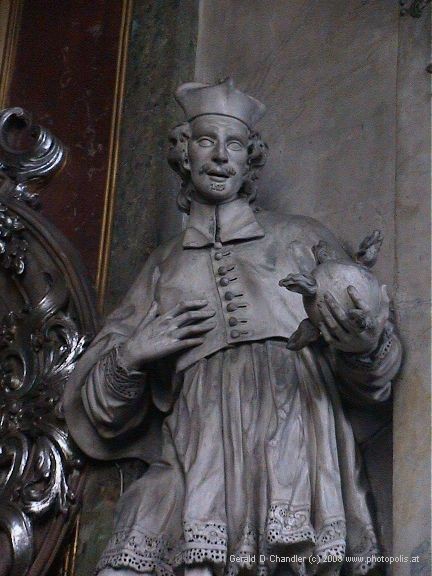|
Once
upon a time Wroclaw was Breslau and then on a whim it became Lvov.
Well,
maybe we should explain.
What is now Wroclaw was for a thousand years part
of the Holy Roman Empire which was really rather bloody, German, and only
sometimes able to exert imperial power.
But Breslau all that time was governed
by ethnic Germans.
It had a German population that was sometimes larger
and sometimes smaller than the Polish population.
Until.
Until Hitler set
off WWII, lost it, and Stalin took Lvov and made it into Lviv, part of
Ukraine.
All the Poles were expelled and a good number of them and of their
ancient Polish treasures went to live in Breslau, now called Wroclaw.
The
upshot of the story is that there are lots of Polish and lots of German
things in town.
We found that we could take a direct bus
from Zakopane to Wroclaw, and so we did for twelve hours, setting out before
6 am, and passing through Krakow at breakfast.
In fact, we stopped momentarily
just where we had
arrived by bus ten days
earlier from Lviv.
Wroclaw makes a nice trio with
Lviv
and
Krakow.
All three were originally built around
a market square or "rynok" and at one time had massive walls about them.
All three have preserved their squares, partially because of poverty induced
by communism.
All three have wonderful old churches and a very active cultural life.
And all three once
had vibrant Jewish lives that are now present mostly as museum memories.
We're glad we got to see all of them.
But if you had to see only one it
should be Krakow.
For us Lviv is a close second; it is so much more
laid back, and in its own way prettier.
Where does that leave Wroclaw?
A proud third.
See it if you can.
|

